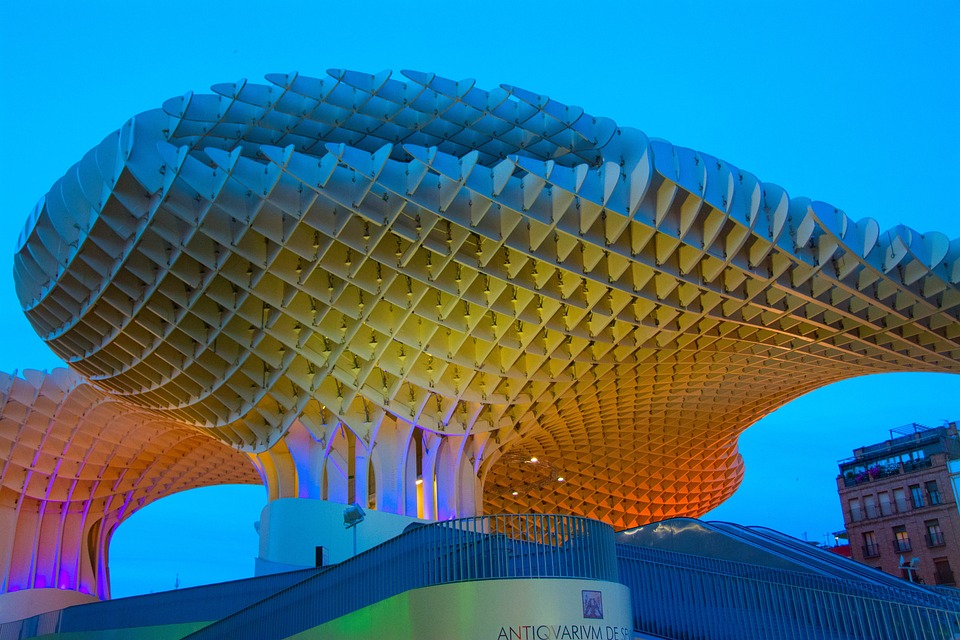Introduction
Seville, the capital city of southern Spain’s Andalusia region, is a popular tourist destination known for its vibrant culture, historic landmarks, and breathtaking architecture. While iconic attractions such as the Alcázar of Seville and the Giralda tower are must-visit sites, the city also harbors hidden treasures that are often overlooked by visitors. In this article, we will delve into the lesser-known gems of Seville, allowing you to unlock a whole new realm of exploration and discovery in this enchanting city.
The Metropol Parasol: A Modern Marvel
Nestled in the heart of Seville’s old quarter, the Metropol Parasol amazes with its contemporary architecture and stunning views. This wooden structure, dubbed “The Mushrooms” by locals, is the world’s largest wooden structure and offers a unique perspective on the city. Climb to the top to witness panoramic views of Seville, providing an alternative vantage point that will leave you in awe.
Hospital de los Venerables: A Baroque Gem
Tucked away in the famous Santa Cruz neighborhood, the Hospital de los Venerables is a hidden gem that exudes Baroque beauty. This former retirement home for priests now serves as an art center where you can admire exquisite works by esteemed painters like Velázquez. Take a leisurely stroll through the tranquil courtyard and explore the art galleries to immerse yourself in the rich artistic history of Seville.
Plaza de España: A Majestic Square
Though not entirely unknown, Plaza de España is often overshadowed by Seville’s more famous attractions. This grand square, built for the 1929 Ibero-American Exposition, boasts a magnificent blend of Renaissance and Moorish architectural styles. Marvel at the intricate ceramic tilework, take a boat ride in the picturesque canal, and bask in the grandeur of this awe-inspiring plaza.
Triana: The Authentic Neighborhood
Cross the Guadalquivir River via the elegant Triana Bridge, and you will find yourself transported to the traditional neighborhood of Triana. Known for its deep flamenco roots and ceramic workshops, Triana offers an authentic taste of Seville’s local culture. Explore its vibrant streets, indulge in delicious tapas, and be captivated by impromptu flamenco performances that breathe life into the district.
Alameda de Hércules: The Bohemian Haven
Escape the tourist crowds and head to Alameda de Hércules, a bustling square nestled in Seville’s Macarena neighborhood. Once a haven for the aristocracy, this agora has transformed into a bohemian hotspot, brimming with trendy bars, art galleries, and live music venues. Immerse yourself in the artistic atmosphere, mingle with locals, and savor the vibrant nightlife that sets this area apart.
FAQs
Q: How can I reach Seville?
A: Seville is well-connected by air, train, and bus. The Seville Airport (SVQ) serves both domestic and international flights, while the Santa Justa train station provides high-speed rail links. Bus connections are also available from various Spanish cities.
Q: When is the best time to visit Seville?
A: The spring (March to May) and autumn (September to November) seasons offer pleasant weather and are ideal for exploring Seville. Summer months can be scorching, while winter experiences milder temperatures.
Q: Are there any other hidden gems in Seville?
A: Absolutely! In addition to the mentioned attractions, Seville also boasts hidden gems like the Casa de Pilatos, the María Luisa Park, and the Palacio de las Dueñas. Exploring these sites will reveal even more treasures.
Q: Can I walk between these lesser-known gems?
A: Yes, many of these hidden treasures are within walking distance of each other, making it convenient to explore them on foot. Seville’s compact size allows for easy navigation on foot or by bike.

